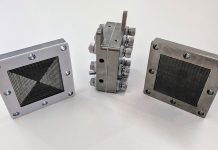
Have you ever wondered if our bodies could store digital information like a computer?
Amazingly, scientists from the National University of Singapore, led by Associate Professor Poh Chueh Loo, have done just that!
They’ve invented a “biological camera” that uses the DNA inside living cells to capture, save, and retrieve images, much like a regular digital camera does with pictures.
Here’s some background. The world is creating tons and tons of data every day, like all the photos, videos, and messages we send.
In 2018, we made around 33 zettabytes of data (just to give you an idea, one zettabyte is equivalent to a trillion gigabytes!).
By 2025, it’s estimated we’ll have 175 zettabytes. Traditional storage methods, like hard drives and cloud storage, take up a lot of physical space and can harm the environment, so scientists are on the hunt for a better solution.
The good news is, our own DNA might be that solution! DNA, which is found in every living organism on Earth, already stores genetic information that helps our bodies work properly. And it’s super efficient!
One tiny gram of DNA can store more than 215,000 terabytes of data—that’s like squeezing 45 million DVDs into something the size of a sugar cube! Plus, DNA is pretty sturdy, and can survive for hundreds of years.
Previously, scientists tried to make synthetic DNA in the lab to store data, but that process was expensive, tricky, and sometimes error-prone.
So, Professor Poh and his team thought, why not use the DNA that’s already inside living cells? It’s like having a ready-made data bank.
The team came up with a system they call “BacCam,” which works sort of like a digital camera. They compared the DNA in a cell to a roll of film waiting to be exposed to light. Using a method called optogenetics, they shone light on the cells and ‘imprinted’ images onto the DNA, like how a camera captures a scene when you press the shutter button.
They also used a kind of barcoding system (like the barcodes you see on products in a supermarket) to mark each image so they could identify it later.
Finally, they used machine learning, a type of artificial intelligence, to sort and piece together the stored images. All these steps work together to form the “biological camera.”
The cool thing about the “BacCam” system is that it can capture and store multiple images at the same time using different colors of light.
And unlike earlier attempts at DNA data storage, this system is easier to duplicate and scale up.
“This new method is like building a bridge between biology and digital systems,” says Professor Poh. By cleverly using DNA and light, they’ve created the first “living digital camera.”
It’s a cheap and effective way to store data in DNA, and it opens up new ways of using biological systems to capture and store information.
This breakthrough could revolutionize how we store data, and it’s an exciting example of how science is always finding new ways to solve problems and inspire our imagination!
The findings were published in Nature Communications.
Follow us on Twitter for more articles about this topic.



